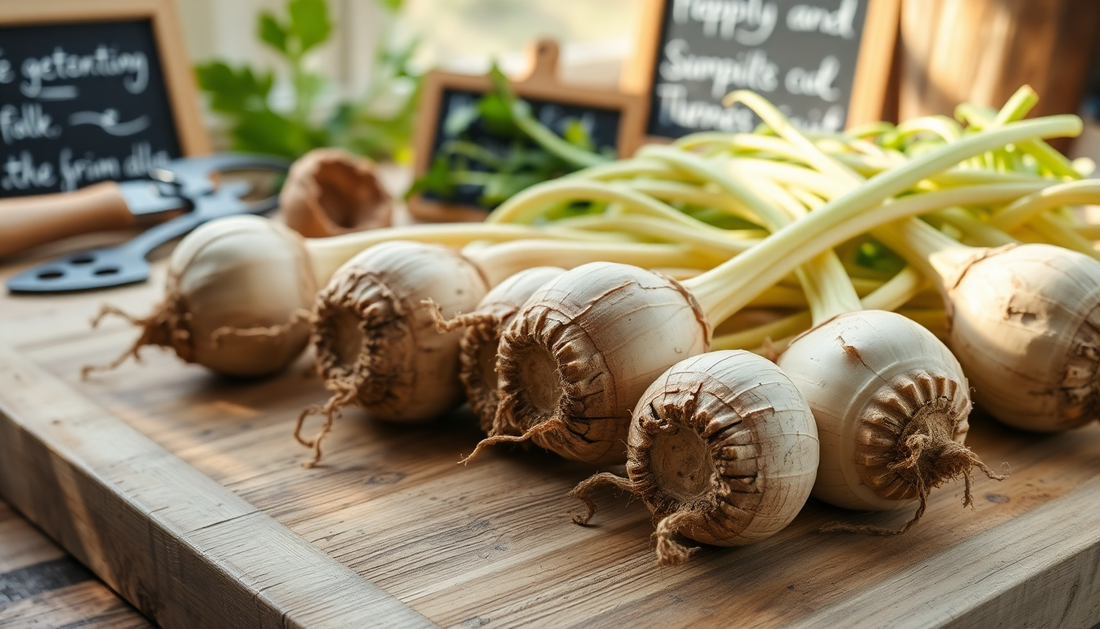
Why Are My Turnips Woody and Tough?
As a passionate gardener, I've encountered my fair share of challenges when it comes to growing healthy and delicious vegetables. One issue that has perplexed me in the past is the problem of woody and tough turnips. If you've ever experienced this frustration, you're not alone. In this blog post, I'll delve into the reasons behind this common problem and provide you with practical solutions to ensure your turnips are tender and flavorful.
Understanding the Causes of Woody Turnips
Turnips are a versatile root vegetable that can be enjoyed in a variety of dishes, from roasted sides to hearty stews. However, when they become woody and tough, they can be a real disappointment. There are several factors that can contribute to this issue:
Soil Conditions
One of the primary reasons for woody turnips is poor soil conditions. Turnips thrive in well-drained, nutrient-rich soil with a slightly acidic pH. If your soil is compacted, lacks organic matter, or has a pH that is too high or too low, it can stunt the growth of the turnips and result in a tough, fibrous texture.
Stress and Maturity
Turnips can also become woody and tough if they experience stress during their growth cycle. This can be caused by factors such as drought, extreme temperatures, or even overcrowding in the garden. Additionally, if you allow the turnips to grow too long, they can become overly mature, leading to a woody and unpalatable texture.
Variety Selection
Not all turnip varieties are created equal when it comes to texture and flavor. Some varieties are naturally more prone to becoming woody, while others are bred to maintain a tender and sweet flavor even as they mature.
Preventing Woody Turnips
Now that we've identified the primary causes of woody turnips, let's explore some strategies to prevent this issue:
Prepare the Soil
Ensuring your soil is in optimal condition is the first step to growing tender turnips. Incorporate plenty of organic matter, such as compost or well-rotted manure, to improve soil structure and nutrient content. Additionally, test your soil's pH and adjust it to the ideal range of 6.0 to 6.8 if necessary.
Proper Watering and Fertilization
Consistent and adequate watering is crucial for turnips. Aim to keep the soil consistently moist, but avoid overwatering, which can lead to other problems. Additionally, provide a balanced, nitrogen-rich fertilizer to support healthy growth and development.
Timely Harvesting
Pay close attention to the maturity of your turnips and harvest them at the right time. Depending on the variety, turnips are typically ready to harvest when they are 2 to 3 inches in diameter. Allowing them to grow too large can result in a woody texture.
Choose the Right Variety
When selecting turnip varieties, look for ones that are specifically bred to maintain a tender and sweet flavor, even as they mature. Some popular options include 'Purple Top White Globe,' 'Tokyo Cross,' and 'Hakurei.'
Manage Stress
Do your best to minimize stress on your turnip plants. Protect them from extreme temperatures, drought, and pests or diseases. Ensure they have adequate spacing to prevent overcrowding, and consider using row covers or other protective measures if necessary.
Troubleshooting Woody Turnips
If you've already harvested woody turnips, don't despair. There are a few ways you can try to salvage them:
Peeling and Slicing
Carefully peel off the tough outer layer of the turnip, and then slice or dice the remaining flesh. This can help to remove the woody texture and make the turnips more palatable.
Cooking Methods
Certain cooking methods can help to tenderize woody turnips. Try roasting, braising, or simmering them in flavorful liquids, such as broth or wine. The long, slow cooking process can help to break down the tough fibers.
Blending or Pureeing
If the turnips are still too tough, you can try blending or pureeing them into a smooth puree. This can be a great way to incorporate them into soups, stews, or even dips and spreads.
Conclusion
Dealing with woody and tough turnips can be frustrating, but with the right knowledge and strategies, you can overcome this common problem. By focusing on soil preparation, proper watering and fertilization, timely harvesting, and variety selection, you can ensure your turnips are tender, sweet, and a delight to enjoy. Remember, gardening is a continuous learning process, and with each challenge you face, you'll become a better and more knowledgeable grower.
Happy gardening!







No comments